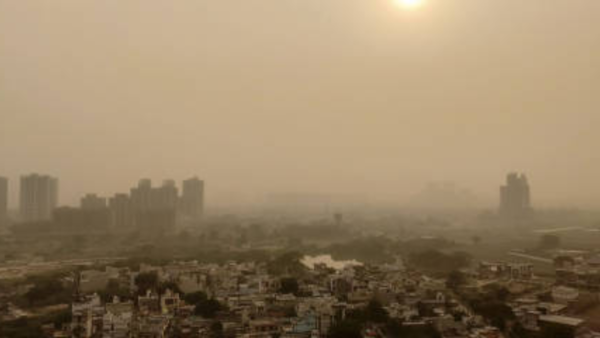[ad_1]
The researchers found that stroke riskwas nearly 30% higher when people had been exposed to nitrogen dioxide up to five days prior.For carbon monoxide exposure, the risk was 26% higher; for sulfur dioxide, 15% higher; and for ozone exposure, 5% higher, reported WebMD.

What is stroke?
A stroke, also known as a cerebrovascular accident (CVA), is a medical condition that occurs when there is a sudden disruption of blood flow to the brain. High blood pressure, smoking, diabetes, high cholesterol, obesity, family history of stroke, and age (risk increases with age) are the common risk factors of stroke.
Ischemic stroke is the more common type of stroke, accounting for about 85% of all cases. It occurs when there is a blockage or clot in one of the blood vessels that supply blood to the brain. The blockage can be caused by a blood clot that forms in the brain’s blood vessels (thrombotic stroke) or by a clot that travels from another part of the body to the brain (embolic stroke). The lack of blood flow deprives brain cells of oxygen and nutrients, leading to cell damage and potentially permanent brain injury.

Hemorrhagic stroke occurs when a blood vessel in the brain ruptures or leaks, causing bleeding within or around the brain. Hemorrhagic strokes can be further divided into two subtypes: intracerebral hemorrhage (bleeding within the brain) and subarachnoid hemorrhage (bleeding in the space between the brain and the surrounding membrane). Hemorrhagic strokes are less common than ischemic strokes but tend to be more severe.
How to identify if it is a stroke?
The symptoms of a stroke can vary depending on which part of the brain is affected, but common signs include:
- Sudden numbness or weakness in the face, arm, or leg, especially on one side of the body.
- Sudden confusion, trouble speaking, or difficulty understanding speech.
- Sudden trouble seeing in one or both eyes.
- Sudden severe headache with no known cause.
- Sudden trouble walking, dizziness, loss of balance, or lack of coordination.
Why is this relevant?
“Previous research has established a connection between long-term exposure to air pollution and an increased risk of stroke,” said study author Ahmad Toubasi, from the University of Jordan in Amman.
“However, the correlation between short-term exposure to air pollution and stroke had been less clear. For our study, instead of looking at weeks or months of exposure, we looked at just five days and found a link between short-term exposure to air pollution and an increased risk of stroke,” Toubasi said.
The analysis involved a review of 110 studies that included more than 18 million cases of stroke. Researchers looked at pollutants such as nitrogen dioxide, ozone, carbon monoxide and sulfur dioxide.
They also looked at different sizes of particulate matter, including PM1, which is air pollution that is less than 1 micron (μm) in diameter, as well as PM2.5 and PM10.
World Heart Day: Risks factors for cardiovascular disease in women
PM2.5 or smaller includes inhalable particles from motor vehicle exhaust, the burning of fuels by power plants and other industries as well as forest and grass fires. PM10 includes dust from roads and construction sites.
People who had exposure to a higher concentration of various types of air pollution had an increased risk of stroke.
(With inputs from PTI)
[ad_2]
Source link










More Stories
We can’t wait to face India in the final: Pat Cummins | Cricket News
Railways plans 3,000 additional trains in next 4-5 years to minimise number of waitlisted tickets | India News
Faridabad: Man dies after ‘falling from hotel room window’ while partying with friends